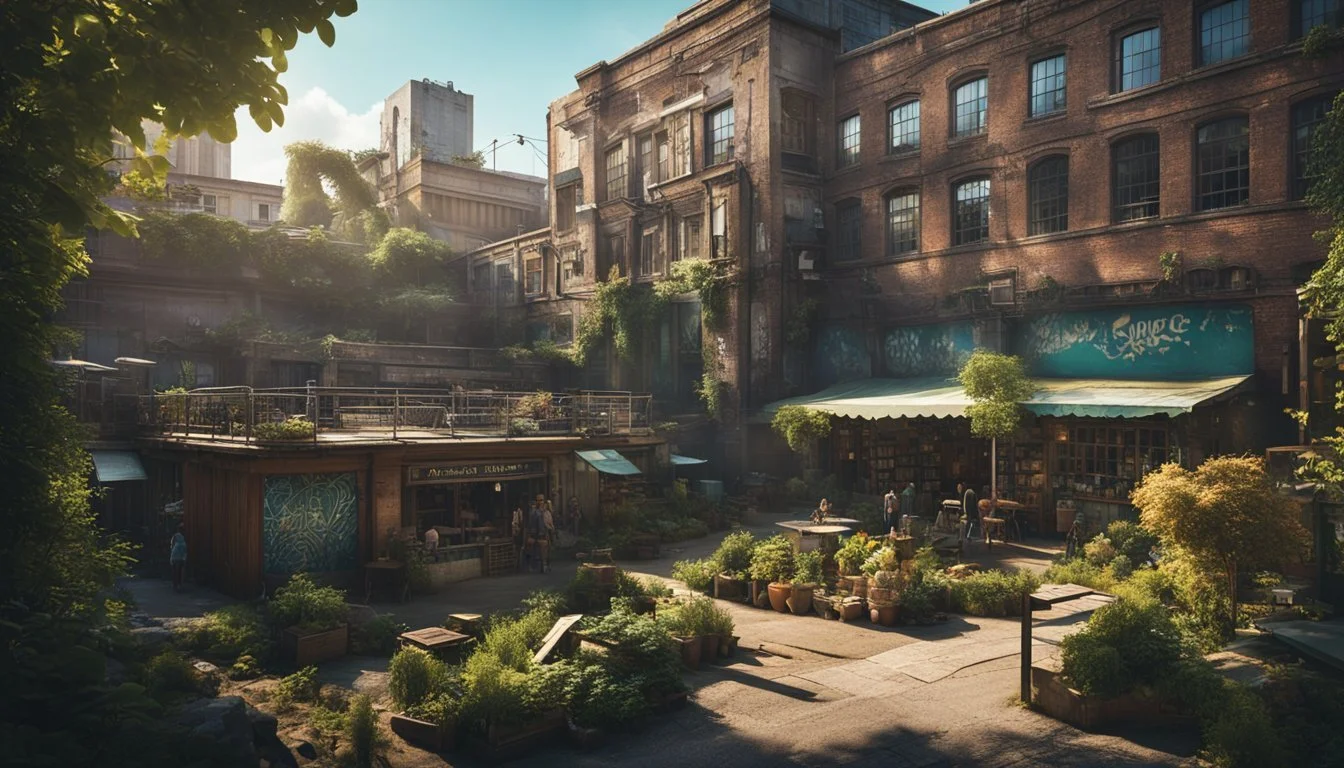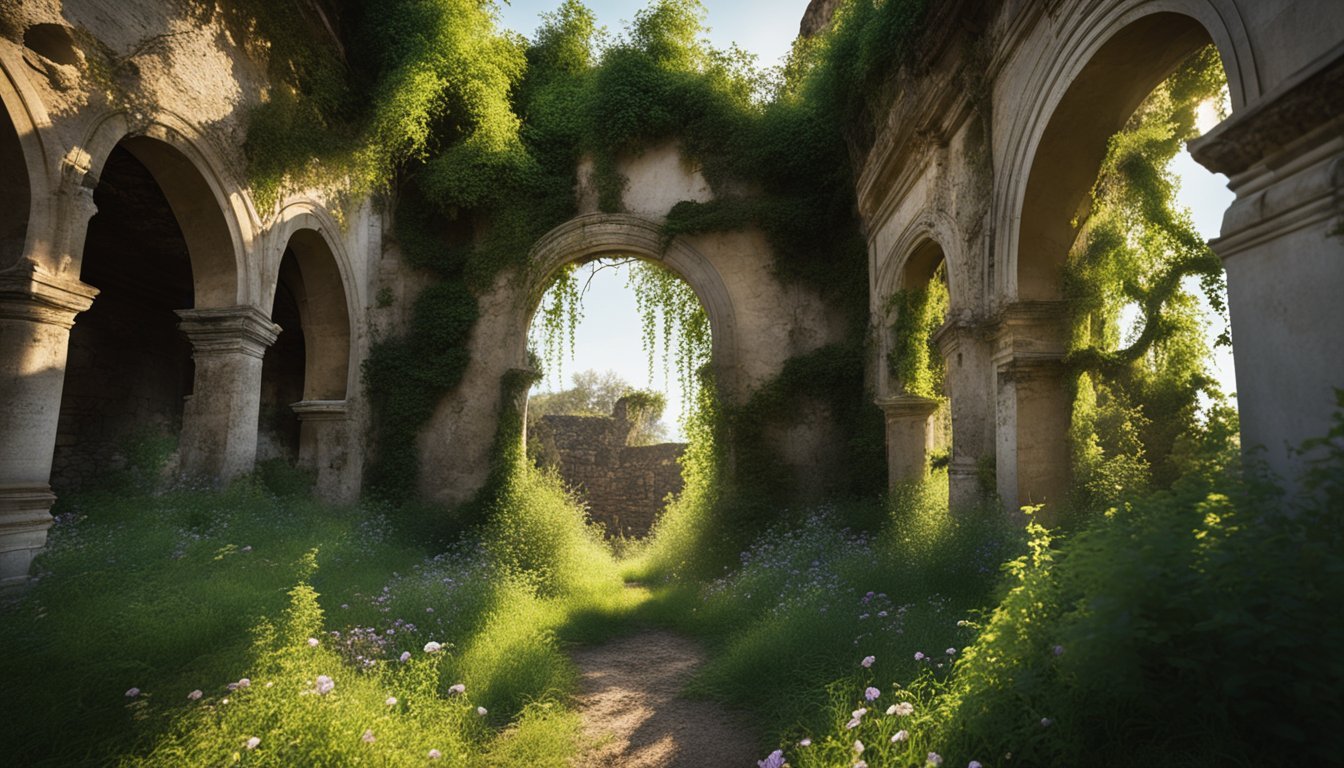6 Unconventional Ways to Find Unique Filming Locations
A Guide for Filmmakers
Scouting for unique filming locations can be a daunting task in the vast world of movie magic. Whether it's an indie film looking for that perfect out-of-the-box setting or a blockbuster aiming for an exotic backdrop, finding a spot that's both unique and accessible can be a game-changer. One of the most effective ways to stand out in the crowded film industry is by discovering innovative and unconventional locations for your shoot.
This article will guide filmmakers through six creative methods to uncover hidden gems for filming. By exploring beyond the usual routes and tapping into lesser-known resources, filmmakers can find locations that not only enhance the visual storytelling but also provide a fresh perspective.
1) Abandoned Theaters
Abandoned theaters provide a rich backdrop for filming, offering a blend of historical elegance and eerie decay. Their once-grand stages and ornate fixtures can enhance a film's visual storytelling.
These locations come with unique architectural details. From grand foyers to vintage seating, abandoned theaters add authenticity and depth to scenes without extensive set design.
Accessibility is a key advantage. Many of these theaters are located in urban areas, making them easier to reach for film crews. Their typically central locations simplify logistics and reduce travel time for cast and crew.
Permissions for filming in abandoned theaters can often be secured through municipal authorities. This is generally more straightforward than negotiating with private property owners.
Abandoned theaters naturally offer a sense of mystery and intrigue. Their atmospheric qualities make them suitable for a variety of genres, including horror, drama, and period pieces.
2) Defunct Amusement Parks
Defunct amusement parks offer a trove of unique filming locations. These sites often feature a mix of decaying rides, overgrown pathways, and empty structures that create an eerie yet captivating backdrop. Filmmakers can explore these abandoned spaces to inject an element of nostalgia or spookiness into their projects.
Many such parks in the United States closed due to economic downturns, natural disasters, or changing entertainment trends. For instance, Six Flags New Orleans was left in ruins after Hurricane Katrina. Its haunting ambiance makes it an excellent choice for horror or dystopian genres.
Ohio's Geauga Lake, once bustling with activity, now stands silent. Closed in 2007, its remnants tell stories of a bygone era. These locations can provide an authentic setting without the need for extensive set-building or CGI.
The history behind these parks adds a layer of depth to filming. Scenes shot in these locations can evoke strong emotional reactions from viewers familiar with their past. Additionally, these sites often remain relatively untouched, providing a raw, unpolished environment that can be incredibly versatile for various narratives.
Using defunct amusement parks can save on production costs. Their existing infrastructure serves as ready-made sets, minimizing the need for construction and decoration. This approach also offers the chance to capture unique visuals that might be difficult to replicate elsewhere.
3) Hidden Rooftop Gardens
Hidden rooftop gardens offer a unique backdrop for filming locations, providing a blend of urban scenery and natural beauty. These gardens are often tucked away atop buildings, offering serene environments away from the bustling city streets below.
In New York City, the Rockefeller Center boasts a series of rooftop gardens with stunning views of St. Patrick's Cathedral. These hidden gems provide an intimate space that contrasts with the vibrant cityscape, making them ideal for capturing unique shots.
San Francisco also houses hidden rooftop gardens, such as the one atop the Westfield Shopping Center on Market Street. Located on the 9th floor, this garden is accessible via a specific entrance, offering a peaceful retreat amidst the city's hustle and bustle.
London is another city with its own selection of hidden rooftop gardens. Cannon Bridge Roof Gardens, with its expansive acre of space, provides a lush, green area with views of iconic landmarks like Tower Bridge and St. Paul's Cathedral. It transforms a typical rooftop into a private park.
These hidden gardens are not only visual treasures but also offer varied settings for different filming needs. They combine greenery with architectural elements that can enhance any scene.
For filmmakers seeking unique and versatile locations, hidden rooftop gardens present an exciting option. They bring together the best of urban and natural elements, creating a distinctive and visually appealing filming environment.
4) Remote Deserted Islands
Remote deserted islands offer filmmakers a unique canvas for crafting captivating and untouched scenes. These locations are often characterized by their pristine landscapes, free from modern development.
One such example is Pitcairn Island, an extremely isolated location in the South Pacific Ocean. Accessible only by a shipping service that runs every three months, it provides a rare setting hard to replicate elsewhere.
These islands typically feature untouched beaches, dense forests, and rugged cliffs, making them versatile backdrops for various genres. Filming in such isolated spots requires meticulous planning due to limited accessibility and lack of local infrastructure.
Despite the challenges, remote deserted islands offer unmatched natural beauty and tranquility. This makes them an attractive choice for filmmakers seeking to capture scenes of isolation, adventure, or raw natural environments.
Permissions may be needed to film in these remote places, ensuring the preservation of their pristine conditions. Careful coordination with local authorities and environmental agencies can facilitate a smooth filming process.
5) Historic Ruins
Historic ruins offer filmmakers a unique and captivating backdrop. These sites provide a tangible connection to the past, adding depth and authenticity to any production.
Alnwick Castle in England, for instance, is a prime example. Known as the real-life basis for Hogwarts in the Harry Potter films, it illustrates how ruins and castles can become iconic cinematic landmarks.
Ancient ruins in Athens also make compelling filming locations. The city’s blend of historical depth and modern vibrancy offers a versatile setting. Notable spots include the Acropolis and the Parthenon, which have been featured in various films and shows.
Historic ruins often require little alteration to appear as timeless settings. Their weathered stones and aged structures lend a sense of realism that is difficult to replicate with modern sets.
Filmmakers should also consider lesser-known ruins. These sites can provide a fresh perspective and avoid the predictability of more famous locations.
Incorporating historic ruins into a film not only serves the story but also evokes a sense of place that resonates with audiences. By choosing these locations, filmmakers can harness the power of history to enhance their visual storytelling.
6) Underground Tunnels
Underground tunnels offer a unique and versatile option for filmmakers seeking distinctive locations. These subterranean spaces can provide a mysterious, otherworldly atmosphere, making them ideal for a variety of genres, including thrillers and sci-fi.
The intricate design and historical significance of many tunnels add a layer of authenticity. Such locations can represent anything from secret hideouts to futuristic corridors.
Filming in underground tunnels may also present practical advantages. These spaces are often insulated from external noise, providing a controlled environment for sound recording.
Permissions and safety considerations are crucial. Filmmakers should ensure that the integrity of these locations is maintained and that all necessary measures are in place for crew safety.
Some famous films that have effectively used underground tunnels include “The Matrix Reloaded” and “Skyfall.” These spaces have helped create memorable scenes that captivate audiences.
Understanding the Importance of Unique Filming Locations
Using unique filming locations can greatly enhance the visual storytelling of a film, offering fresh and captivating backdrops. These unconventional sites contribute to narrative depth and audience engagement.
Benefits of Using Unconventional Sites
Unique locations add visual intrigue. They provide a distinctive look that helps a film stand out. Filming in less-common places eliminates the risk of repetitive scenery, which can make a story feel stale.
These sites often offer authentic settings. For instance, an old, abandoned factory can provide a genuine atmosphere that’s hard to recreate with sets. Authentic locations save time and budget on set construction and design.
Unconventional places can also offer natural light and textures that enhance the film's visual quality. This organic enhancement can make filming easier and more efficient.
Impact on Audience Perception
Unique filming locations can deeply influence how audiences perceive a story. Fresh settings make the film more memorable. Viewers are more likely to remember scenes set in distinctive places than those in frequently used locations.
These original sites also aid in maintaining viewer engagement. When the backdrop keeps changing and remains visually stimulating, it helps keep the audience's interest.
By providing real, unmanicured settings, unique locations can also enhance the film's realism and authenticity. This realistic feel can help audiences feel more connected to the narrative, making the story more impactful.
Maximizing Resources for Location Scouting
Effective location scouting can save time and money while ensuring that the perfect settings are found. Two key strategies include the use of technology and collaboration with local experts.
Leveraging Technology in Scouting
Technology plays a critical role in modern location scouting. Online platforms provide vast databases of potential locations. Filmmakers can browse through high-quality images and videos to evaluate the suitability of each site.
Utilizing geotagged photos and 3D mapping tools allows for detailed visualizations, giving a sense of space and environment before visiting. Software like Google Earth can help assess the surroundings and logistics.
Augmented Reality (AR) apps offer interactive previews, enabling scouts to visualize sets within real-world locations. They can also assess lighting conditions virtually, aiding in pre-production planning.
Collaboration with Local Experts
Local experts bring invaluable insights into the scouting process. They possess knowledge of hidden gems and logistical details that aren't easily accessible online. Collaborating with location managers, local filmmakers, and tourism boards can streamline the search process.
Local experts can advise on permits, regulations, and seasonal variations, ensuring compliance and better preparation. They also facilitate connections with property owners and community leaders, enhancing access and fostering goodwill.
Forming partnerships with regional film commissions can lead to incentives such as tax breaks or permit assistance, adding value to the production process.





